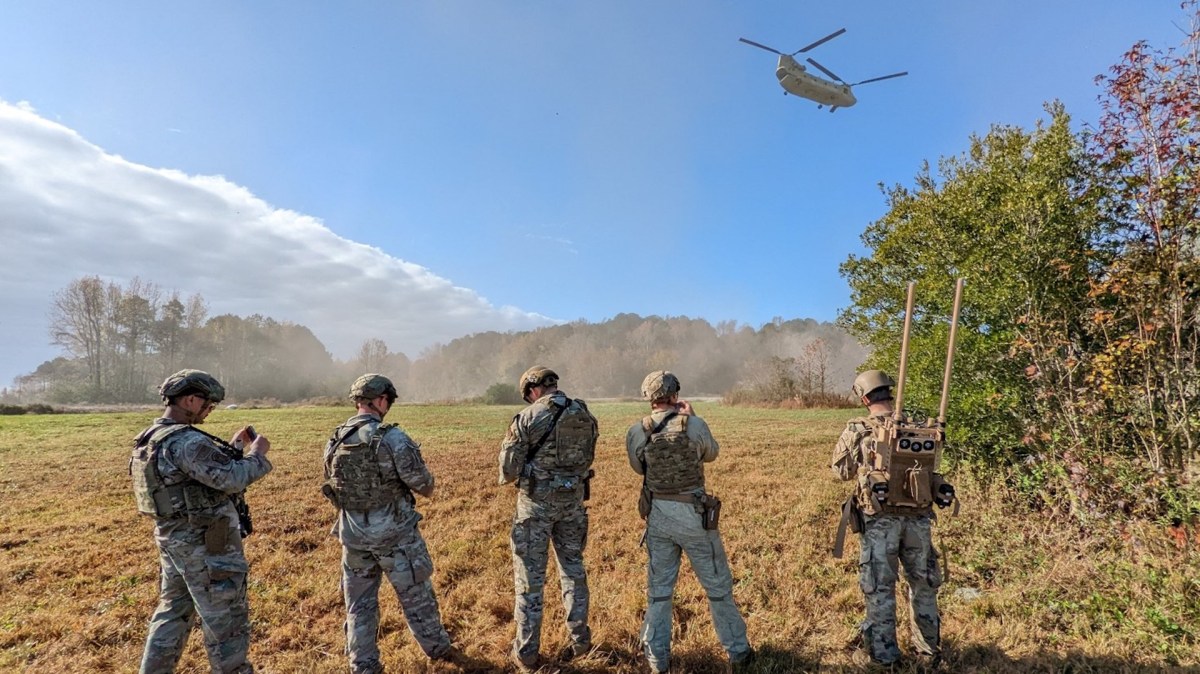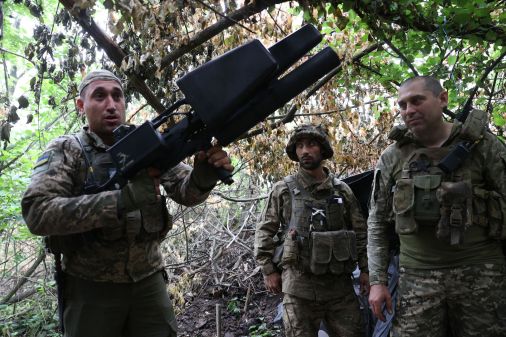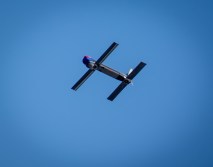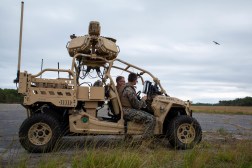Navy sees IED and drone jamming as important use case for AI

Artificial intelligence can enhance an electronic warfare tool that the U.S. military has developed to defeat improvised explosive devices and drones in multiple domains, according to the Navy’s program manager for expeditionary missions.
The Joint Counter Radio-Controlled Improvised Explosive Device Electronic Warfare (JCREW) Increment One Block One (I1B1) system achieved full operational capability last year. There are mounted, dismounted and fixed-site variants, according to Naval Sea Systems Command. The Northrop Grumman-built equipment is currently used by the U.S. Navy, Air Force and international partners such as Australia.
“You can think about this as the bubble that we provide in the electronic spectrum to protect sailors, soldiers, airmen and Marines,” Capt. Jon Haase said Tuesday at the Surface Navy Association’s annual symposium.
The program includes a full government-owned technical data package, open architecture hardware, upgradable software and firmware. Tech refreshes provide opportunities to enhance capabilities.
Haase said his office views artificial intelligence as a critical enabler for a variety of systems under his portfolio at the Navy’s program executive office for unmanned and small combatants, including JCREW.
“We think that AI can help in terms of a jammer by improving system performance in terms of latency and resource allocation onboard. And by latency, I’m talking about the ability of the system to respond in near-real time to the threats it sees. Because in the spectrum, things move very quickly through the air, and our ability to respond appropriately and in low latency is critical,” he noted.
Haase used an air traffic control analogy to explain the benefits that the technology can provide for the military’s EW mission set.
“If every air traffic controller had to plot an airplane by hand and plot its relative course and speed, it would take so many air traffic controllers to just maintain situational awareness. That’s not what happens. We have systems and automations that do that so you can have fewer air traffic controllers having better situational awareness of the skies, right? If the JCREW system is our air traffic controller, the AI … helps it understand what to pay attention to. So by doing that, we can put the resources — and by that I mean the hardware and software power that exists within the JCREW system — to work on the right signals, because we’re paying attention to them because they’re AI-enabled,” he said.
“So this is how we think AI can help with threats within the spectrum and spectrum management. We then can network this together through these systems and achieve sort of bubbles of protection and situational awareness about the spectrum that are required for the joint force. Ultimately, this capability not only protects those who are using it, but affords ability to maintain situational awareness,” he added.
The Navy has a related tool, called the Drone Restricted Access Using Known EW (DRAKE), that is intended to defeat unmanned aerial systems.
“It’s the same hardware” as the JCREW, Haase noted. “And the reason it’s the same hardware was because it’s a software-defined system. And when the counter-UAS requirements emerged, we found that we could take the hardware in the JCREW and we could create the DRAKE to deal with the counter-UAS threat. All of the benefits in AI in terms of latency and system performance and reliability, translates into counter-UAS capability of the DRAKE. The DRAKE is onboard ships, providing counter-UAS bubbles of protection in an environment where we’re needing to provide counter-UAS protection to the force at sea.”






